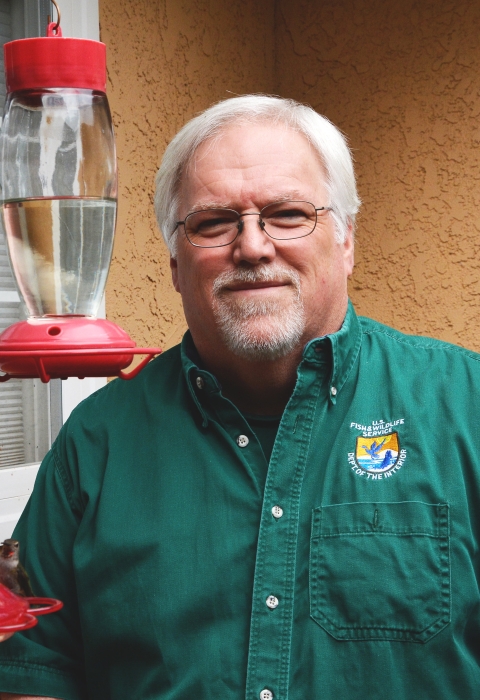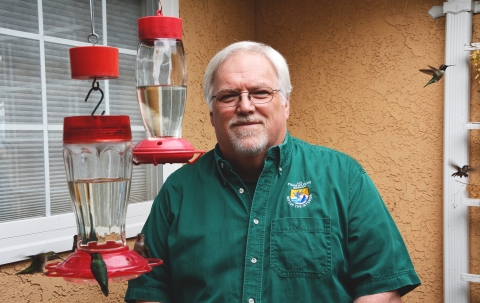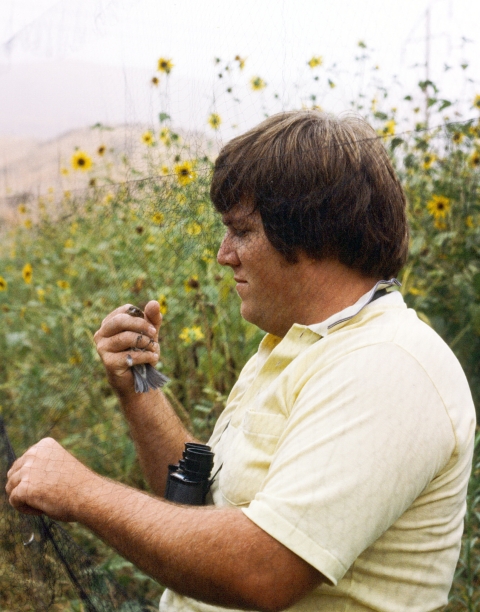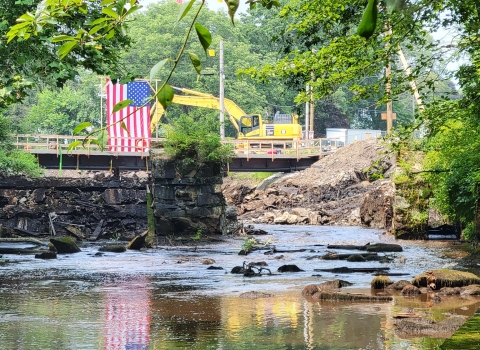In March 2018, Rick Farris, wildlife biologist and section 7 coordinator for the U.S. Fish and Wildlife Service in Ventura, Calif. will retire after two decades with the agency. We asked Rick to share a few memories of his time with the Service and his advice for future generations of conservationists.
What role do you serve with the agency?
I primarily manage the Ventura office’s program for Interagency Cooperation, or Section 7 Section 7
Section 7 Consultation
The Endangered Species Act (ESA) directs all Federal agencies to work to conserve endangered and threatened species and to use their authorities to further the purposes of the Act. Section 7 of the Act, called "Interagency Cooperation," is the mechanism by which Federal agencies ensure the actions they take, including those they fund or authorize, do not jeopardize the existence of any listed species.
Learn more about Section 7 of the Endangered Species Act. It’s basically a requirement for federal agencies to first use their authorities to further the conservation of listed species, and second to ensure that their actions don’t jeopardize listed species or destroy or adversely modify critical habitat.
I’m also responsible for coordinating with the U.S. Army Corps of Engineers in our area on its implementation of section 404 of the Clean Water Act. My role is to act as a bridge between their regulations and ours for section 7, and to help our staff understand that relationship.
What are some of your most memorable moments in the field?
While working for the Service, I was assigned to work on the Tejon Ranch habitat conservation plan. The ranch is 272,000 acres and the largest single private landholding in California. Visiting the landscape was like traveling back in time and seeing what parts of California must have looked like 300 years ago. The diversity of habitats and the near undisturbed nature of the landscape was incredible. During one of my visits, we had reached a hill overlooking the Antelope Valley. It was raptor migration season and we could see “kettles” of hawks, falcons, and eagles soaring wherever there was a good updraft. They would ride the thermal to a great height, then glide to the next one and repeat the process, covering huge distances with little effort. Seeing hundreds of raptors soaring together in these swirling clouds was one of those moments that reminded me that what I was working for was worthwhile.
What are the most difficult and rewarding aspects of your job?
One of the most difficult things in this job is convincing people that conservation is worthwhile; that it’s an effort to protect something we should all cherish. I wish I could make people experience the deep emotional connection I feel with plants and wildlife, clean water and air, and open spaces. I can’t imagine a life worth living without a diverse natural world.
I value my time working with others in the office more than anything. I’ve always had excellent mentors and I’ve wanted to be the same for other people. There’s a great sense of accomplishment when you can explain a difficult concept and have someone understand it and take it with them.On a more personal level, I’m proud of an effort I made to learn American Sign Language after we hired a biologist who had been deaf since birth. He was an intelligent, funny, personable individual and I wanted to be able to communicate with him directly rather than writing notes. So, my wife and I decided to study ASL together. I eventually developed a 500+ sign vocabulary and was able to chat with him quite comfortably. He even asked me to serve as his interpreter in a couple of situations. I’ve since forgotten most of what I learned, but I still recall learning how important it is to be able to communicate on another person’s terms.
What advice would you give biologists who are just starting their careers with the U.S. Fish and Wildlife Service?
Stick with it. No one else is going to do your job as well as you, and no one cares more than you. At some point, I came to realize that if someone with less concern for our natural world was doing my job they wouldn’t bother to notice something extraordinary, like a mass migration of songbirds, or habitats worthy of preserving when possible, like Tejon Ranch. You are the ones who care the most or else you wouldn’t have dedicated your careers to conservation. You are the best ones to carry out the Service’s mission.
You have some special artistic talents, how did you become in involved in woodworking?
I took an interesting path to learning woodworking. I studied classical guitar for five or six years before I realized it would take more time than I had to become as good a guitarist as I would like. I decided that if I couldn’t play very well, maybe I could make guitars. The skills required to be a luthier have a foundation in all kinds of other woodworking techniques, so I realized I needed to start small and learn how to use the tools and learn the properties of wood before I could try anything as complex as building a musical instrument.
What do plan/hope to do during your retirement?
I hope to learn to build musical instruments and enjoy life with my wonderful wife who will retire in June after almost 30 years as a biology professor. I also hope to use what I’ve learned to further conservation in some way, whether through activism or volunteering with conservation organizations.




